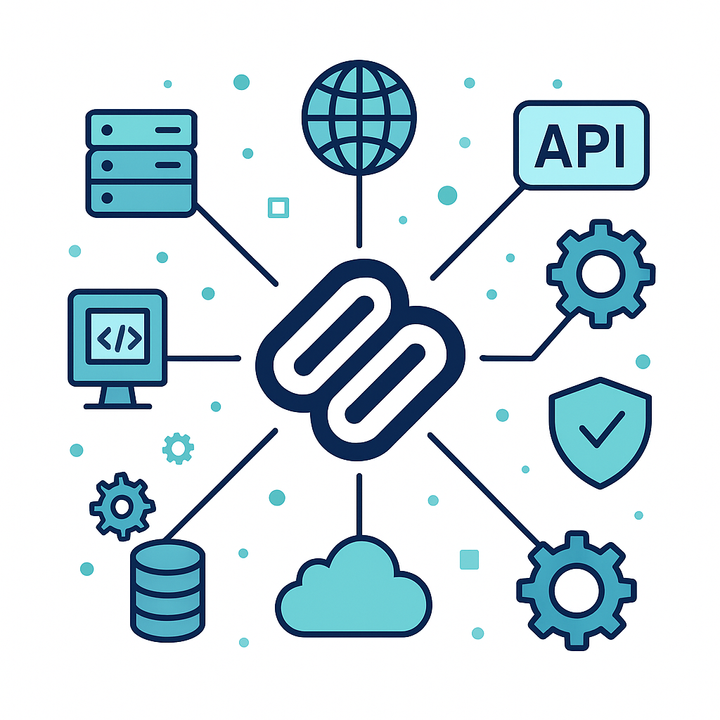Beyond Note-Taking - Powerful Knowledge management for Developers
As a full-stack AI Python developer, staying organized is vital. Notion is my go-to tool for managing backend APIs, frontend interfaces, and ML models. I create a centralized workspace to document everything, manage code snippets, track tasks, and visualize AI project pipelines. Discover how Noti...

As a full-stack AI Python developer, I'm juggling a lot: backend APIs, frontend interfaces, machine learning models, data pipelines, and keeping everything documented. Notion has become a key tool in my workflow to keep all these moving parts organized. Here's how I use it and some tips that might be helpful for other devs in a similar role.
1. Setting Up My Development Hub in Notion
My Notion workspace is my central hub. It’s where everything starts:
a) My primary goal is to tie all aspects of a project together – code, documentation, data, project management, and even research papers.
b) I integrate Notion with my existing toolchain. I link out to GitHub repos, AWS/GCP consoles, and even embed Grafana dashboards for quick monitoring.
c) I leverage Notion’s block structure to create a personalized dashboard. I have quick links to ongoing projects, a to-do list, and a section for recent research papers or articles.
- Just starting out? Check out Notion's onboarding guide: Getting Started with Notion - It's helpful for setting up your space initially, even if you're a seasoned dev.
2. Documenting Everything: Code, APIs, and Models
As a full-stack AI developer, good documentation is critical. I use Notion templates to make this easier:
a) I have templates for API documentation (endpoint details, request/response examples), model cards (describing model architecture, performance metrics, and ethical considerations), and project briefs (outlining goals, tech stack, and milestones).
b) I use emojis for quick visual recognition of different document types: ⚙️ for APIs, 🧠 for ML models, 📝 for notes, etc.
c) Toggle lists are great for breaking down complex information. I use them for things like detailed API request parameters or model training logs.
d) I often link databases within my Notion workspace. For example, a project brief might link to the associated GitHub repo, the API documentation page, and the model card.
- Here's a Notion resource on using templates for teams: Using Templates in Notion - even though it's aimed at teams, I've found it useful for personal organization too.

3. Managing Code Snippets and Scripts
Notion’s code blocks are fantastic for a Python developer:
a) I use code blocks extensively – for documenting Python functions, sharing shell scripts, embedding SQL queries, or even just jotting down quick code experiments. The syntax highlighting for Python is essential.
b) I embed code blocks within meeting notes (when discussing technical implementation details), documentation (as examples), and project pages (to keep track of key scripts).
c) I appreciate the small details in Notion's code blocks: the ability to wrap long lines, copy to clipboard easily, and the choice of light or dark mode.
- Learn more about code blocks here: Working with Code Blocks
4. Project Management: Keeping Track of Tasks and Bugs
With multiple projects on the go, Notion helps me stay on top of things:
a) I create separate databases for each project to track tasks, bugs, and feature requests.
b) I use advanced filters to create custom views. For example, I might have a view showing "High Priority Bugs assigned to me" or "Tasks due this week."
c) Nested filters are super useful for refining things further, like "Bugs related to the API component, that are in the 'In Progress' status."
d) Filter groups with AND/OR logic let me build really specific queries to focus on exactly what I need.
e) I can quickly share filtered views with teammates or stakeholders by copying a link, making it easy to show progress or discuss specific issues.
- Dive deeper into Notion's filtering capabilities: Advanced Database Filtering

5. Visualizing AI Project Pipelines and Roadmaps
For AI projects, I often need to visualize workflows and roadmaps:
a) I use a database to represent my project roadmap, listing out key phases like data collection, model training, API development, and deployment.
b) Kanban boards are perfect for tracking the progress of tasks within each phase. I move tasks from "To Do" to "In Progress" to "Done."
c) I use properties to add crucial information to each task, like priority levels, assigned developers (often myself!), due dates, and links to relevant code or documentation.
d) Status properties help me see at a glance how far along we are with different aspects of the project, from data preprocessing to model deployment.

6. Integrating Notion with My AI/ML Toolstack
Notion plays nicely with my wider tech ecosystem:
a) Notion is my central hub. I link out to experiment tracking dashboards on Weights & Biases or MLflow, dataset locations in cloud storage, and deployment logs on my cloud provider.
b) I embed content wherever possible. I might embed a Loom video explaining a complex model architecture or a Figma prototype for a user interface.
c) I haven't gone too deep into the Notion API yet, but I can see the potential for automating things like creating new project pages or updating task statuses based on events in my CI/CD pipeline.
7. Collaboration with Team Members and Stakeholders
Even though I often work independently on specific components, collaboration is still essential:
a) I share relevant Notion pages and databases with other developers, data scientists, product managers, and stakeholders, making sure everyone has access to the information they need.
b) I use comments and mentions to discuss specific points, get feedback on designs, or ask questions about requirements.
c) For larger projects, we might set up dedicated team spaces in Notion to keep everything organized by project or team.
- For a broader perspective, I found some useful tips in this Notion course: Notion for People Ops – while it's not directly aimed at developers, it has some good insights on collaboration and workflow management.

In short, Notion has become an indispensable part of my workflow as a full-stack AI Python developer. It helps me wrangle code, document APIs, manage machine learning models, track project progress, and collaborate effectively. If you're looking for a flexible tool to tie all your development work together, I definitely recommend giving Notion a try.




Comments ()